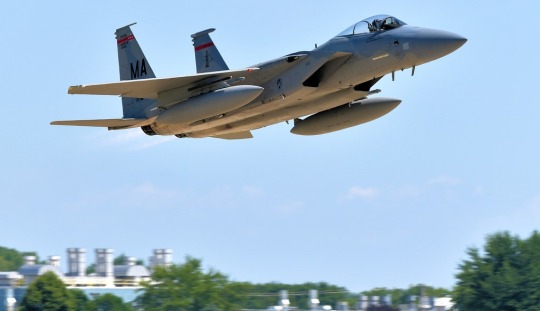#multirole strike fighter
Text

Changing the Guard, 1976
An English Electric Lighting armed with two Red Top missiles flies alongside her replacement in the interceptor role, a McDonnell Douglas F-4 Phantom II armed with four Sidewinder missiles, 4 Sparrow missiles, and a single 20mm gun pod.
Both are carrying their maximum combat load, the striking difference between one of the first Mach 2-capable supersonic interceptors, and a third generation multirole fighter jet.
74 notes
·
View notes
Text
Unleashing Power and Precision: A Comprehensive Guide to Indian Air Force Fighter Planes
Introduction
The Indian Air Force (IAF) stands as a symbol of strength and prowess in the vast skies above the subcontinent. Over the years, it has acquired a formidable fleet of fighter planes, each a marvel of engineering and a testament to the nation's commitment to aerial defense. In this blog post, we will delve into the Indian Air Force Fighter Planes list, exploring the capabilities and features that make them the guardians of the Indian airspace.
Evolution of the Indian Air Force
The IAF has come a long way since its inception in 1932. From its humble beginnings with obsolete biplanes, the force has evolved into a modern and technologically advanced air arm. The backbone of the IAF's aerial might lies in its fleet of fighter planes, which have played a crucial role in safeguarding the nation's sovereignty.

Key Considerations in Fighter Plane Selection
Before diving into the list of Indian Air Force fighter planes, it's essential to understand the criteria that govern the selection of these aerial assets. The IAF considers factors such as range, speed, agility, firepower, and electronic warfare capabilities when choosing its fighter planes. These aircraft are designed to operate in diverse environments, from the scorching deserts of Rajasthan to the high-altitude regions of the Himalayas.
Indian Air Force Fighter Planes List
Sukhoi Su-30MKIThe Su-30MKI, a Russian-origin aircraft, has become the backbone of the IAF's fighter fleet. With its twin-engine design, long-range capabilities, and advanced avionics, the Su-30MKI is a versatile and lethal platform. It can carry a variety of air-to-air and air-to-ground missiles, making it a potent force in both aerial combat and ground attacks.
Dassault RafaleThe Dassault Rafale, a French-made multirole fighter, represents the cutting edge of modern military aviation. Its advanced radar systems, electronic warfare capabilities, and precision-guided munitions make it a force to be reckoned with. The Rafale has significantly bolstered the IAF's strategic capabilities, providing an edge in both air superiority and ground attacks.
MiG-29The MiG-29, a stalwart in the IAF's fleet, has undergone various upgrades to enhance its performance. Known for its agility and speed, the MiG-29 is a fourth-generation fighter that can hold its own in air-to-air combat. Its role in providing air defense and escorting other aircraft adds a layer of versatility to the IAF's operations.
TejasDesigned and manufactured indigenously, the Light Combat Aircraft (LCA) Tejas is a point of pride for India's aerospace industry. With its lightweight design and advanced avionics, the Tejas is tailored for maneuverability. As the IAF continues to induct Tejas variants, it marks a significant stride toward self-reliance in defense production.
JaguarWhile originally designed for ground attack missions, the Anglo-French SEPECAT Jaguar has been adapted for various roles within the IAF. Equipped with a combination of precision-guided munitions and a formidable gun, the Jaguar serves as a potent asset in both air-to-ground and anti-ship operations.

Strategic Importance of Fighter Planes
The role of fighter planes extends beyond just engaging in dogfights. They serve as a critical component of national defense, acting as a deterrent and providing a strategic advantage. The IAF's fighter planes play a pivotal role in ensuring air superiority, conducting reconnaissance, and delivering precision strikes when needed.
Challenges and Future Developments
While the IAF's fleet of fighter planes is formidable, it is not without challenges. The need for continuous upgrades, technological advancements, and the emergence of new threats require constant vigilance and adaptation. The IAF is actively pursuing modernization initiatives, including the development of next-generation fighter aircraft, to maintain its edge in an ever-evolving geopolitical landscape.
Conclusion
In conclusion, the Indian Air Force's fighter planes stand as a testament to the nation's commitment to aerial defense. From the iconic MiG-21s of yesteryears to the state-of-the-art Rafales and Tejas of today, each aircraft in the IAF's inventory plays a crucial role in securing the skies above India. As the nation continues to invest in indigenous defense production and embraces cutting-edge technology, the future of the IAF's fighter fleet looks promising, ensuring that the Indian skies remain safeguarded for generations to come.
3 notes
·
View notes
Text

In 2013, images appeared in Western media of what appeared to be an AH-64 Apache attack helicopter being transported by an semi at a rest stop in China.
Rumors swirled about the aircraft - was it the Apache that had been shot down at the 2003 Battle of Karbala? Was it a perfect clone of the aircraft made for the People's Liberation Army? Was it an Egyptian Apache shot down by militants in the Sinai and later smuggled to China? None of these, it turns out.
There is no evidence that China has ever successfully captured or purchased an AH-64, intact or damaged. It is true that a Apache helicopter was forced down due to hydraulic failures at the Battle of Karbala in 2003, resulting in the capture of both the pilots and the airframe by Iraqi militia forces. The Apache's crew, David Williams and Ronald Young, were taken to Baghdad and held alongside other captured American service members, including Jessica Lynch. They were rescued by special forces soldiers on April 13th, 2003, in the first successful POW rescue mission since the Second World War. Their aircraft, 99-5135, was visually in relatively good shape when captured by Iraqi forces and shown on Iraqi state television. However, following international news media coverage, its location was revealed, subsequently leading to its destruction by coalition strike aircraft. This eliminates the possibility that the Apache on display above is 99-5135.


As for the Sinai theory, many netizens posited online that the aircraft was Egyptian in origin thanks to the particular hue of the paint. There is no indication that VNSA's in the Sinai have ever successfully shot down an Egyptian Apache (much less contacted a foreign government and successfully smuggled it out of the country without interference from Egypt or the United States.) VNSA's in the Sinai do possess MANPADS, however, and have reportedly a downed an Egyptian government Mi-8/17.

In reality, this aircraft is a type of clone, albeit a non-flying one. This particular replica arrived at the China Air Defense Expo Park (中国防空博览园) in Ningbo, China in mid-2011 according to local media. News articles about the arrival very clearly state that the Apache is a replica. Images of its arrival show it on the same trailer from the news articles published in 2013. It is likely that the images shown in the 2013 articles were taken in 2011 and simply surfaced two years later in a popular article by Western aviation outlet The Aviationist. The Ningbo Apache is is on display near the entrance to the park, next to some conventional AAA guns, although its display area has been renovated a few times since its arrival. Recent images from the park show the Ningbo Apache in a state of disrepair, likely suffering damage from accelerated rust due to its proximity to the Pacific. Notably, Ningbo's Air Defense Expo Park is also home to a full scale replica of the PLAAF's own Chengdu J-10 multirole fighter.
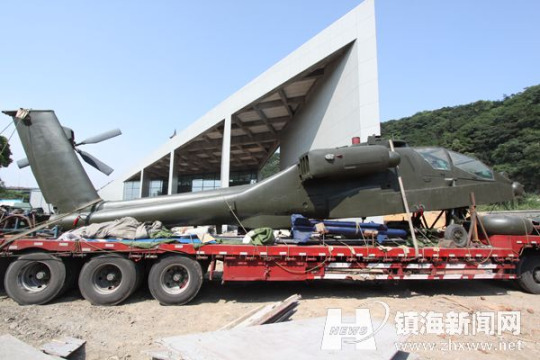




It is likely that the Ningbo Apache shares its lineage with a similar replica at the China Aviation Museum (中国航空博物馆). This replica was built by a PLA colonel, Meng Yifeng, in his spare time according to a plaque on site. While not a perfect replica of the Apache, it is visually quite close. Unlike the Ningbo Apache, the replica at the China Aviation Museum lacks a (replica) AN/APG-78 Longbow radar system. The aircraft is now on display in the cavern that once served as an underground aircraft hangar during the facility's life as Shahezhen Airbase. Why the Chinese government has seen fit to display these replicas so prominently is unclear, as they are non-flying, imperfect clones of the American gunship. Neither replica is claimed to represent an actual Apache, captured or otherwise.

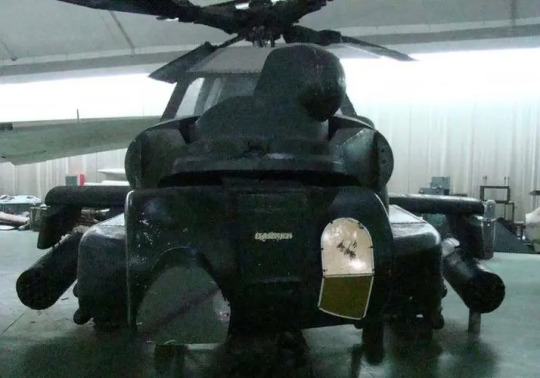
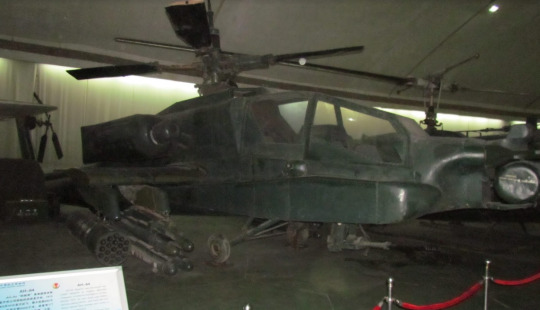

#next time will not be a helicopter i promise#military#military history#people's liberation army#china#ah 64#osint#helicopter#us army#history
28 notes
·
View notes
Text
A few days ago U.S. President Joe Biden announced the training of Ukrainian pilots for the F-16 multirole fighter aircraft:
President Joe Biden told G7 leaders on Friday that the US would join in efforts to train Ukraine’s pilots on fourth generation fighter jets including the F-16s, a senior administration official told CNN on Friday.
This has obviously been in the planning for some time. The timing of the announcement at the G7 summit was simply chosen to maximize the propaganda value for Biden.
The process we have seen has repeated itself again and again. As pro-Ukrainian blogger (with no military knowledge) describes it:
This has clearly become a proxy war between Russia and NATO, supercharging the political considerations inherent to any war. Ukraine’s goal is to wheedle as much military aid as humanly possibly out of NATO, especially the United States. The United States’ goal is more complex: give enough aid to push Russia back, but not so much that its proxy war with Russia escalates into an actual one.
This dynamic has created a Hunger Games scenario where Ukraine is constantly playing to the cameras to cajole extra gifts from the wealthy sponsors who watch its every move over the internet in real time. I had decided against using this analogy until I saw Ukrainians themselves using it. There is something grotesque and sobering about finding yourself in this position, and writing about it. But it is what it is.
I had assumed that F-16 training had in fact already started several weeks back. The EU blabber mouth Josep Borrell now all but confirmed it:
The European Union’s foreign policy chief said on Tuesday that the US green light to allow Ukrainian pilots to get training to fly F-16s has created an inexorable momentum that will inevitably bring the fighter jets to the Ukrainian battlefield.
…
Borrell added that training for Ukrainian pilots had already begun in Poland and some other countries, though authorities in Warsaw could not immediately confirm the news. The Netherlands and Denmark, among others, are also making plans for such training.
No decision on actually delivering fourth-generation fighter jets has been taken yet, but training pilots now – a process that takes several months – will help speed up battle readiness once a formal decision is made.
The process will be much faster than many assume.
The jets the Ukraine will get have already been selected and will go through ready maintenance. The Ukrainian pilots, who already have some experience on other fighter jets, will get just a short introduction course - six to eight weeks or even less. They do not need to train air to air fights because the F-16 would lose any such fight against the newer and better armed Russian jets. They just need to learn the basics, starting, landing, going up to a certain height and launch point, release whatever long range weapon will be on board. Anything else would be suicide.
The big question is where to start and land from. The F-16 has a relative short combat range of some 500 kilometer and there will be no air to air tankers. There ain't that many airfield that are suitable for the fighter jet's missions.
Someone who seems competent explains the problem (edited):
The Ukrainian Air Force, to my knowledge, has had to use guerilla airfield tactics to keep the Russians guessing as to where they are operating from. This is to prevent Moscow from targeting the aircraft/impromptu airfield from drone attacks and air strikes, destroying stationary aircraft or the rendering the “runway” unusable. Soviet-built aircraft are sublimely suited to this.
For ex, the MiG-29 “Fulcrum” uses automatic Foreign Object Debris (FOD) covers that close for initial start up (vid). Meanwhile louvres located at the top of the wing-root open to provide alternate air intake to the jet engines. Upon take off, once the weight on wheels (WoW) switch in the nose gear detects it is off the ground, the louvers cycle closed and the FOD covers on the primary intake retract, allowing max airflow to the engines once the danger of FOD damage has passed. This ingenious design allows the Fulcrum to operate, not only from unimproved runways or even highways, but even from grass fields. The wing itself and the distance to the ground preventing small stones and debris from getting sucked into the delicate engines.
I cannot stress how dangerous and debilitating FOD is to aircraft. A single rock, bolt, nut, or minor road debris can have a cataclysmic effect on a modern high-performance jet engine. It may not even happen immediately, the damage could happen on take off, then progressively get worse during flight as the blades, now potentially bent or unbalanced begin to self-destruct the engine internals. Even if a MiG-29 happens to shell out an engine because of the careless placement of a bolt or tool by a mechanic or the ingestion of a bird during flight or take off, the MiG HAS TWO ENGINES which are isolated in separate bays, preventing the destruction of one engine from FOD-ing out the second.
The F-16, by contrast, is definitely not suited for this style of airfield. The bottom of the intake lip sits approximately 30” from the ground with no provision of alternate intake. In addition, all the suction flow of that air comes from the sides, fore, and ground since no air can be ingested from above the engine (that’s where the fuselage is). With no provision for FOD protection or alternate, high-mounted intakes during the entire time spent on the ground, this calls for rigid and inflexible FOD control measures from the location of engine start, to taxiing routes to the runway.
In the USAF, this meant hundreds of maintainers walking at arms-length intervals two to three times a day with eyes on the ground looking for any and every piece of debris that could be ingested by the multi-million dollar vacuum cleaner with only ONE engine we were charged with maintaining. In addition, an almost constant procession of street-cleaners rumbled up and down the flightline, taxiways and runway. Everything had to be spotless lest we risk the aircraft, or worse, the pilots.
Imagine the preparation it would take to complete this process on a 10,000 foot long straight highway, in the dark, while trying to be as inconspicuous as possible so as not to draw the attention of collaborators or Russian spies. You couldn’t hop from highway to highway or run from unimproved airfields like the Ukrainian Air Force can do with MiG-29s, you’d be handcuffed or at the very least less mobile. Imagine a disused Soviet airfield that suddenly had all its weeds plucked from the cracks in the concrete, concrete patched, the runway spotless. What signal does that send? “F-16s could, will, or are operating from here.”
There are several other issues discussed in the above thread. The maintenance philosophy behind U.S. and Russian build planes is different. The Russians just change factory parts and systems, U.S. maintainer try to repair them locally:
The MiG-29 averages about 11 hrs of maintenance for every ONE hr of flight. The F-16? A whopping increase to 18.5 maintenance hrs for every one hr of flight time. These are per aircraft with experienced crews. These figures also assume decent airframe hours on the aircraft.
The Ukraine will also need a sufficient number of competent maintainers. The training for them will likely take more time than for the pilots. The author of the above suggests a solution:
Plenty of mechanics in Europe and the US are happy to lend their services to the UAF as members of the “International Legion” or the modern day iteration of the “Flying Tigers”. Myself included.
Well, good luck doing maintenance on the F-16s that will soon sit on those few available and thereby quite vulnerable Ukrainian airfields.
Russian air defenses, from the ground and from the air, can certainly suppress any F-16 flights coming near to them.
The only sensible purpose of those planes is thereby their one or two time use as a launching vehicles for long range missiles like the British Storm Shadow cruise missiles that were given to Ukraine. It is easy to train for those missions but I doubt that they will make any noticeable difference.
4 notes
·
View notes
Text

The "Standardization" Policy of combat aircraft used in the United States Armed Forces
Fernando Valduga By Fernando Valduga 11/27/2022 - 8:00 PM in History, Military
The standardization in relation to the model of combat aircraft to be acquired, together, by the three branches that simultaneously employ this type of equipment (the American Air Force - USAF; the Navy - US Navy; and the Marine Corps - USMC) has historically always been a (difficult) goal to be pursued.
Although there is no completely multipurpose aircraft (as it has been proven with the relative disaster regarding the attempt to produce, in Europe, a "Multirole Combat Aircraft - MRCA" that gave rise to the Tornado), at least a necessary standardization (for equivalent missions) is sought between the different operators of the aircraft.
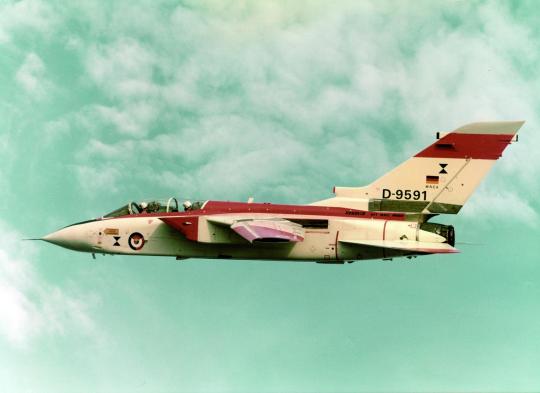
PANAVIA Tornado, which was born from the European MRCA project.
This time, using the same military aircraft concomitantly in the three forces means an indisputable economy of scale (reducing the final unit cost of each aircraft and maintenance), also representing a greater efficiency in the stock of spare parts, training of pilots and ground teams, among other numerous advantages.
The difficulty, however, lies in the fact that it is very difficult to make the same aircraft (and, therefore, a single aeronautical project) able (albeit with some adaptations) to meet (fully) the operational requirements of each force, fulfilling, with maximum efficiency, the different parameters (and the very expectations of combative performance) required by the air force, marine on board (
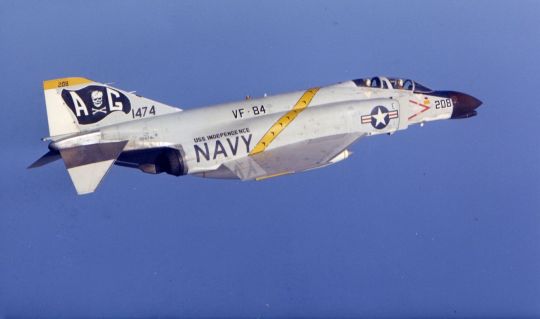
One of the greatest icons of hunting aviation, the venerable McDonnell Douglas F-4 Phantom II, was one of the "standard" aircraft (although in different versions) used by the three main branches of the American armed forces (photos above).
The same can be said, - despite all the numerous criticisms -, in relation to the Lockheed Martin F-35 Lightning II project, which, employed in specific versions (F-35A in USAF; F-35B, with V/STOL capacity, in the USMC; and F-35C, with reinforced landing gear and other specificities, in the Navy), has been promoting a different (and customized) versions.

The Joint Strike Fighter project and its three variants of the F-35.
However, in the late 1960s, with the failure of General Dynamics F-111 (simply refused by the embed Navy, in its naval version F-111B, despite the production and delivery of more than five hundred units, in different versions, to the USAF), the Pentagon issued orders for the achievement of two ambitious projects: a fighter of air superiority (to serve
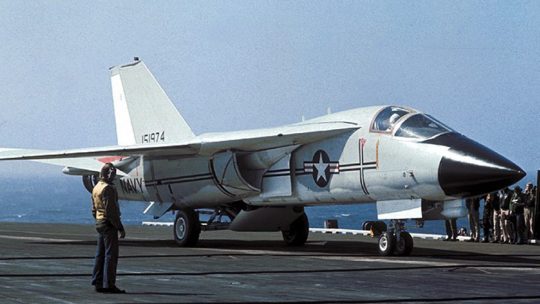
F-111B in tests with the US Navy.
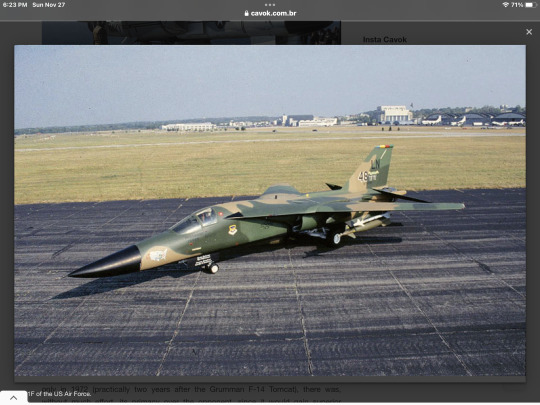
F-111F of the US Air Force.
The original idea would be for a single aircraft (winning a cost and performance competition) of each class to be selected for all branches of the US armed forces.
In the first category, although the McDonnell Douglas F-15 Eagle made its first flight only in 1972 (practically two years after the Grumman F-14 Tomcat), there was, without much effort, its primacy over the opponent, since it would gain superior performance (maximum speed of Mach 2.5 and thrust-weight ratio of 1:1 compared to the Tomcat, with maximum speed of Mach
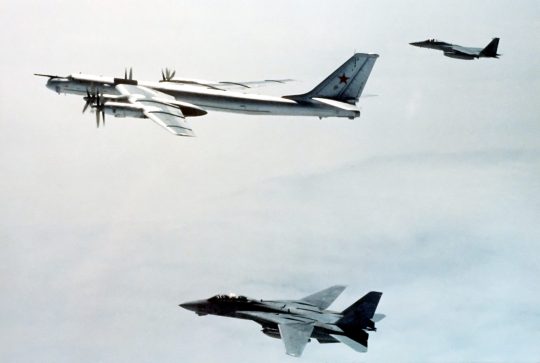
An F-14 and an F-15 escort a Russian Tu-95.
The advanced (and innovative) wing technology (designed on the structure of a prehistoric bird) also gave the F-15 a much more advanced design on Grumman's (less innovative) solution, which adopted in the F-14 wings of variable geometry (already experienced in its previous design, the F-111), with its complex corresponding system, implying a much more expensive maintenance and also Still, a political decision (avoiding the possible bankruptcy of Grumman, which was, in the certainty of producing, - employing the previous experience of the F-111 of General Dynamics, an unparalleled fighter -, invested own money, far beyond the resources made available for the development of the aircraft) was conveniently transformed into technical arguments:
“The U.S. Navy's effort to replace the F-4 Phantom II was tortuous. The F-111B, with its weight that kept increasing and excessive complexity, failed, and, in the early 1970s, its possible successor, the nascent F-14, was also facing problems. (...)
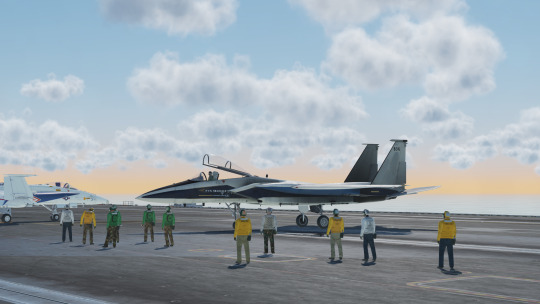
Conceptual art of the F-15N "Seagull".
McDonnell Douglas entered the scene offering the F-15N, based on its F-15A, which, at the time, had not even flown yet. It had a lot in his favor, being a simpler design than the F-14, with better engines (...), in addition to better performance and price. However, technical issues were conveniently raised, such as adding a heavy naval landing gear, folding wings to occupy less space on the deck (...)” (McDonnell Douglas F-15: The Others)
Navy authorities themselves also saw in the Eagle a higher pilotage and did not wish to have a less capable fighter than the one that would enter service in the Air Force.
The solution came with the development of a long-range missile derived from the AIM-47 Falcon (originally designed for the Lockheed YF-12 interceptor) and which gave rise to the very modern AIM-54 Phoenix, which, coupled with a powerful AN/AWG-9 target acquisition radar, would become a weapon system that would allow it to match, in the end, the performance of
Still, McDonnell Douglas insisted on a version called Sea Eagle, which, using the same system, would turn the F-15A into an unparalleled naval fighter, with McDonnell Douglas engineers proposing to discard the F-14A's AN/AWG-9 radar in exchange for a modified version of the F-15A radar AN/APG-63, adjusted to work with the Phoenix missile However, the Navy was compelled to move forward with Tomcat.
Later, the fact that Russians and Chinese subsequently successfully adapted the Flanker to the structure of an aircraft carrier clearly demonstrates that the concept of the Sea Eagle was unequivocally superior to the F-14A platform.
In the LWF (Lightweight Fighter) program, two models also competed, the General Dynamics YF-16 Fighting Falcon and the Northrop YF-17 Cobra.
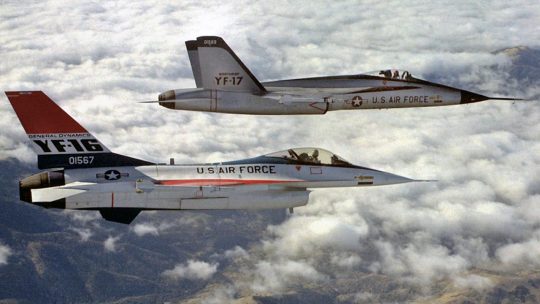
The fighters of the LWF, YF-16 and YF-17 program.
The General Dynamics project quickly showed its technical superiority (and economy, since it used the same engines as the F-15A Eagle: the Pratt & Whitney F100), including winning international competition for part of NATO countries, the so-called "Contract of the Century" in 1974, allowing the USAF to also adopt it immediately.
However, the Navy (and, in part, the Marine Corps), claiming the General Dynamics aircraft to be single-engine, defended the point of view that it did not meet the safety requirements for employment in aircraft carriers. The argument was not new and, in many ways, was also poor, since the Navy had already been using aircraft equipped with a single engine, such as the Vought F-8 Crusader, the Vought A-7 Corsair and the McDonnell Douglas A-4 Skyhawk, among others.
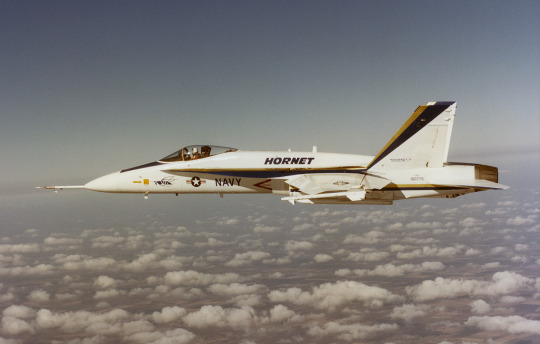
Prototype of the F-18 Hornet.
Once again, in the face of the clear inferiority of performance of the YF-17 Cobra, it was opted for an expensive "third option", through the development of a new platform, based on the Cobra, which gave rise to the McDonnell Douglas F-18A Hornet (and, later, its more capable version F-18E/F Super Hornet). Such absence of standardization was calculated, in values of the time, in a loss to the Pentagon of more than US$ 1 billion only with regard to the amount of the acquisition cost of the aircraft.
The policy of standardization of equipment between the operating forces, therefore, is an orientation that imposes itself, and it is also certain that the complementation of more complex and sophisticated fighters by simpler and more economical models (both in terms of acquisition cost and maintenance and operational availability).
It is also a natural determination for all the armed forces in the world, which is why the USAF pursued, for the 21st century, two different 5th generation (Stealth) fighter fighters, the sophisticated and most capable Lockheed Martin F-22 Raptor in combination with the simplest and least expensive Lockheed Martin F-35 Lightning II, being copied, in this policy,
Reis Friede - Professor Emeritus of the School of Command and Chief of the Army (ECEME), Honorary Professor of the School of Command and General Staff of Aeronautics (ECEMAR), Professor Emeritus of the School of Improvement of Army Officers (EsAO) and Special Lecturer of the School of War (ESG).
More on the subject:
COLD WAR: The American response to aerial superiority
The US conception of aerial superiority 20 years after the introduction of F-14 Tomcat and F-15 Eagle fighters
Tags: Military AviationSPECIALHISTORY
Fernando Valduga
Fernando Valduga
Aviation photographer and pilot since 1992, he has participated in several events and air operations, such as Cruzex, AirVenture, Dayton Airshow and FIDAE. It has works published in specialized aviation magazines in Brazil and abroad. Uses Canon equipment during his photographic work in the world of aviation.
Related news
MILITARY
Stealth planes still have a very visible problem: condensation trails
27/11/2022 - 18:30
The fifth prototype of the KF-21 Boramae was presented during the South Korean president's visit to the KAI factory. (Photo: Korea Defense Blog)
MILITARY
South Korea reveals the fifth prototype of the KF-21 Boramae fighter
27/11/2022 - 14:53
Old Danish F-16 fighters can end up in Argentine hands.
MILITARY
Argentine delegation evaluated Danish F-16 fighters for possible acquisition
27/11/2022 - 12:23
MILITARY
In 1996, Pepsi 'played' about giving a jet hunt for Pepsi points. Two guys got what was necessary
27/11/2022 - 11:21
BRAZILIAN AIR FORCE
FAB F-5 fighter becomes a monument in a city in the interior of Minas Gerais
27/11/2022 - 10:31
MILITARY
USAF's F-35 Lightning IIs still can't fly less than 40 km of lightning
27/11/2022 - 10:40
Insta Cavok
Cavok Twitter
home Main Page Editorials INFORMATION events Cooperate Specialities advertise about
Cavok Brazil - Digital Tchê Web Creation
Commercial
Executive
Helicopters
HISTORY
Military
Brazilian Air Force
Space
Specialities
Cavok Brazil - Digital Tchê Web Creation
P
8 notes
·
View notes
Text
Accuse your enemy of what you are guilty, a nazi propaganda tactics that the Americans live by
The post is machine translated
Translation is at the bottom
The collective is on telegram

⚠️ NEL MENTRE GLI IMPERIALISTI STATUNITENSI ACCUSANO LA CINA DI "SPIONAGGIO" SENZA ALCUNA PROVA, UN ALTRO RC-135V VIENE INVIATO NELLO STRETTO DI TAIWN ⚠️
🇺🇸 Nel mentre gli imperialisti statunitensi continuano a diffamare la Cina e Cuba con notizie fasulle sul tema dello "spionaggio", un altro RC-135V ha effettuato un volo nello Stretto di Taiwan, probabilmente - come riferisce China Army - per osservare il movimento del Gruppo d'Attacco della Portaerei Shandong, che ha effettuato un'esercitazione militare nella Baia di Bohai 🌟
🔍 Provocazioni degli USA contro la Cina nel 2023:
一 24/02: il Comando Orientale dell'EPL intercetta un P-8A nel Mar Cinese Meridionale, e invia un Caccia di Superiorità Aerea J-11, armato con Missili Aria-Aria, per scortare l'Aereo USA al di fuori della Zona Cinese 🔥
二 23/03: gli USA inviano il Cacciatorpediniere Milius nel Mar Cinese Meridionale, nell'Area delle Isole Paracel, al fine di provocare la Cina😡
三 28/04: gli USA inviano un P-8A nello Stretto di Taiwan, per provocare la Pace nella Zona 😏
四 26/05: Il Comando dell'EPL intercetta un RC-135V nel Mar Cinese Meridionale, pericolosamente vicino alla Città di Shantou, e invia un Caccia Multiruolo J-16 per scortarlo fuori dalla Zona Cinese 🔥
五 07/06: gli USA inviano un RC-135U per spiare la Cina, operando all'incontro tra lo Stretto di Taiwan e il Mar Cinese Meridionale 😡
🐰 Queste sono notizie certe, DOCUMENTATE, non le menzogne senza fonti, tipiche del disgustoso sistema USA «Lancia accuse senza fornire le prove» sul Tema di Cuba. Le tigri di carta americane devono costruire artificialmente ogni sciocchezza anti-Cinese sullo «spionaggio a Cuba» per giustificare ulteriori operazioni aggressive nei confronti della Cina 🤮
🇨🇳 丢掉幻想,准备斗争 ⭐️
🌸 Iscriviti 👉 @collettivoshaoshan
⚠️ AS US IMPERIALISTS ACCUSE CHINA OF "SPYING" WITHOUT ANY EVIDENCE, ANOTHER RC-135V IS SENT INTO THE TAIWN STRAIT ⚠️
🇺🇸 While the US imperialists continue to smear China and Cuba with fake news on the subject of "espionage", another RC-135V flew into the Taiwan Strait, probably - as China Army reports - to observe the movement of the Carrier Strike Group Shandong, which conducted a military exercise in Bohai Bay 🌟
🔍 US provocations against China in 2023:
一 24/02: PLA Eastern Command intercepts a P-8A in the South China Sea, and sends a J-11 Air Superiority Fighter, armed with Air-to-Air Missiles, to escort US aircraft out of the Chinese zone 🔥
二 23/03: US sends Destroyer Milius to South China Sea, Paracel Islands Area, in order to provoke China😡
三 28/04: US sends a P-8A into the Taiwan Strait to cause peace in the area
四 26/05: The PLA Command intercepts an RC-135V in the South China Sea, perilously close to Shantou City, and sends a J-16 Multirole Fighter to escort it out of the Chinese Zone 🔥
五 07/06: US sends RC-135U to spy on China, operating at the junction of the Taiwan Strait and the South China Sea 😡
🐰 This is certain, DOCUMENTED news, not the unsourced lies typical of the disgusting US system «Launch accusations without providing evidence» on the Cuba issue. American paper tigers must artificially construct any anti-Chinese nonsense about «espionage in Cuba » to justify further aggressive operations against China 🤮
🇨🇳 丢掉幻想,准备斗争 ⭐️
🌸 Subscribe 👉 @collettivoshaoshan
#socialism#china#italian#translated#china news#communism#collettivoshaoshan#marxism leninism#xi jinping#marxist leninist#marxismo#marxist#marxism#multipolar world#multipolarity#taiwan war#taiwan government#taiwan strait#taiwan#taiwan news#american imperialism#western imperialism#new cold war#asia news#news#tensions#cuba#socialismo#socialist#chinese communist party
2 notes
·
View notes
Text
The Orca Fighter Jet: Pushing the Boundaries of Aerial Warfare

The Orca Fighter Jet has emerged as a groundbreaking development in Indian military aviation, promising advanced capabilities and strategic advantages for the country's defense forces. Let's delve into the details of this cutting-edge aircraft and its significance in the context of Indian military aviation.
Introduction to Orca Fighter Jet
The Orca Fighter Jet, developed indigenously by India's aerospace industry, represents a significant leap in technological prowess and defense capabilities. Designed to meet the diverse needs of modern warfare, this next-generation aircraft incorporates state-of-the-art features, advanced weaponry, and enhanced performance metrics, making it a formidable asset in India's defense arsenal.
Key Features and Capabilities
Stealth Technology: The Orca Fighter Jet integrates stealth technology to minimize radar detection and enhance survivability in hostile environments. Its low observable design, radar-absorbing materials, and reduced infrared signatures contribute to stealth capabilities, enabling strategic operations with reduced risk of detection.
Advanced Avionics: Equipped with cutting-edge avionics systems, the Orca Fighter Jet offers enhanced situational awareness, mission planning, and precision targeting capabilities. Its integrated sensor suite, including radar, electronic warfare systems, and communication modules, enables real-time data gathering and decision-making during combat scenarios.
Multirole Capabilities: Designed for multirole operations, the Orca Fighter Jet can perform a wide range of missions, including air superiority, ground attack, reconnaissance, and electronic warfare. Its adaptability and versatility make it suitable for various combat scenarios, from air-to-air engagements to precision strikes against enemy targets.
High Maneuverability: With advanced aerodynamics and propulsion systems, the Orca Fighter Jet exhibits exceptional maneuverability and agility in aerial combat. Its fly-by-wire controls, thrust vectoring capability, and high thrust-to-weight ratio enable dynamic maneuvering and superior performance in dogfights and tactical maneuvers.
Weapon Systems: The Orca Fighter Jet is equipped with a diverse array of advanced weapon systems, including air-to-air missiles, precision-guided munitions, standoff weapons, and integrated gun systems. These weapons, combined with the aircraft's targeting capabilities, ensure precise and effective engagement of targets across different ranges and threat environments.
Significance in Indian Military Aviation
Strategic Independence: The development and deployment of the Orca Fighter Jet signify India's commitment to enhancing self-reliance and indigenous defense capabilities. By leveraging domestic expertise and technology, India aims to reduce dependence on foreign imports and strengthen its strategic autonomy in military aviation.
Operational Flexibility: The Orca Fighter Jet enhances the Indian Air Force's (IAF) operational flexibility and combat readiness across diverse operational theaters. Its multirole capabilities, advanced technologies, and interoperability with existing platforms enable the IAF to respond effectively to evolving threats and security challenges.
Force Modernization: The introduction of the Orca Fighter Jet reflects India's ongoing efforts towards modernizing its armed forces and maintaining a credible deterrent against potential adversaries. By incorporating cutting-edge platforms like the Orca, India enhances its deterrence posture and defense preparedness in an increasingly complex security environment.
Technological Advancement: The Orca Fighter Jet represents a significant technological leap for Indian military aviation, showcasing the country's prowess in aerospace engineering, research, and development. Its advanced features, stealth capabilities, and integrated systems demonstrate India's ability to innovate and compete on the global stage of defense technology.
Strategic Defense Partnerships: The development of the Orca Fighter Jet also fosters strategic defense partnerships and collaboration between India's defense industry, research institutions, and international stakeholders. Collaborative ventures, technology transfers, and knowledge exchange contribute to mutual benefit, innovation, and capacity building in defense capabilities.
Future Prospects and Challenges
While the Orca Fighter Jet signifies a major milestone in Indian military aviation, its successful integration, operational readiness, and sustained maintenance pose ongoing challenges. Ensuring seamless interoperability with existing platforms, addressing logistical requirements, and maintaining technological superiority are key priorities for maximizing the Orca's potential in defense operations.

In conclusion, the Orca Fighter Jet stands as a testament to India's progress in aerospace technology, defense innovation, and strategic defense capabilities. Its advanced features, multirole capabilities, and significance in Indian military aviation underscore the country's commitment to self-reliance, operational excellence, and national security. As the Orca takes flight, it heralds a new era of indigenous defense prowess and contributes to shaping the future of India's defense landscape.
0 notes
Text
US Navy Orders 17 Additional Boeing F/A-18 Super Hornet Block III Jet Fighters
The U.S. Navy awarded The Boeing Company a $1.3 billion contract March 19 for the purchase of 17 F/A-18 Super Hornet Block III jet fighters and delivery of a technical data package vital to the sustainment of the platform. The Navy received appropriated funds from Congress to purchase these Super Hornets to help mitigate the strike fighter shortfall. The award is an Undefinitized Contract Action with the intent to definitize within the next few months. Delivery of the new Super Hornets is scheduled to begin in the winter of 2026, with final delivery no later than spring 2027. The Boeing F/A-18E and F/A-18F Super Hornet are a series of American supersonic twin-engine, carrier-capable, multirole jet fighters derived from the McDonnell Douglas F/A-18 Hornet, in service with the armed forces of the U.S., Australia, and Kuwait. The F/A-18E single-seat and F/A-18F tandem-seat variants are larger and more advanced versions of the F/A-18C and D Hornet, respectively.
The U.S. Navy awarded The Boeing Company a $1.3 billion contract March 19 for the purchase of 17 F/A-18 Super Hornet Block III jet fighters and delivery of a technical data package vital to the sustainment of the platform. The Navy received appropriated funds from Congress to purchase these Super Hornets to help mitigate the strike fighter shortfall. The award is an Undefinitized Contract Action…

View On WordPress
0 notes
Text
JF-17 Thunder: Did You Know China & Pakistan Teamed Up To Produce A twenty first Century Fight Plane?
Abstract
Pakistan and China developed the JF-17 Thunder as a 4th-gen multirole fighter to switch outdated plane.
This challenge was born from US sanctions on Pakistan and China, leading to shared prices and MoU in 1995.
The JF-17 Thunder is utilized in fight in opposition to terrorist teams in Pakistan and retaliatory strikes in opposition to India.
The CAC/PAC JF-17 Thunder or FC-1 Xiaolong…

View On WordPress
0 notes
Link
$51.00 $ Academy - 1/72 USAF F-15E D-Day - 75th Anniversary https://nzdepot.co.nz/product/academy-1-72-usaf-f-15e-d-day-75th-anniversary/?feed_id=132955&_unique_id=65874ae8d256c Features: The McDonnell Douglas (now Boeing) F-15E Strike Eagle is an American all-weather multirole strike fighter derived from the McDonnell Douglas F-15 Eagle. The F-15E was designed in the 1980s for long-range, high-speed interdiction without relying on escort or electronic-warfare aircraft. United States Air Force (USAF) F-15E Strike Eagles can be generally distinguished from other US Eagle variants by darker aircraft camouflage, conformal fuel tanks (CFTs) mounted along the engine intake ramps (although CFTs can also be mounted on earlier F-15 variants) and a tandem-seat cockpit. The Strike Eagle has been deployed for military operations in Iraq, Afghanistan, Syria, and […] #
0 notes
Text
Homecoming
USS George H.W. Bush
USS Gerald R. Ford
They dock in my hometown and dominate the landscape.
Holy Roman Empire
Such power is seductive…
You can’t take your eyes away
Two Bechtel A1B nuclear reactors
Five squadrons of multirole air superiority strike fighters
Who could oppose them?
And who would even think to?
We are nothing.
Provincials on the outskirts of Rome
I want to believe in Big Brother
I want to rest easy knowing that Father protects the world
And beam with pride whenever I see his warships coming on the horizon.
Guardians of the Free World
Sentinels of the West
But I’ve been too close and seen too much
I know too much and I know better
Satanism in the frat house
Machiavelli’s acolytes thirsty for blood
But they’ll settle for red death and sexual assault.
A brood of vipers
A school of sharks who eat their own young
They turn on each other out of a kind of boredom
Or simply because they know of nothing else better to do.
Brotherhood is betrayal
Patio get-togethers with smoked salmon queso carrot dips and forced laughter.
Amidst the bad jokes and the desperate cackling my dad’s friend tells me how much he loves Batman and how much he misses killing people.
Post 9/11 lonestar quarterback varsity cheerleader pep-rally culture
Band of Brothers jingoism and Republican family values
Post Reich Fourth Reich zeitgeist propaganda films
Our dear beloved Hero of The Fatherland
Our dear beloved American Sniper scouting the aisles of HEB for Always Ultra Maxi Pads and cheap microwave dinners.
I’m getting Laguna Beach flashbacks and Homeland Security Orange Terror Alerts.
Over a million killed in Iraq,
But Janet Jackson’s exposed nipple is somehow the pinnacle of moral depravity.
Wealth is health.
Long gone the Comanche trails we used to hike and the old wooden watchtower where the good Christian children warned of strange nightly rituals and animal sacrifice.
Now they paved the sacred grounds with another shopping mall and you can buy arrowhead souvenirs where every burger joint meets every coffee shop.
Interstate I-95 on the next exit.
Highway marker 279.
Food and gas in 16 miles.
I woke up on some European toll road federal highway built by Colonel Sanders’ military junta.
I could just as easily have been driving back from San Antonio Airport.
Home of the 1999 NBA Champions.
The signs are the same everywhere
But they all lead back to the same source.
Rick was a driver for Halliburton.
Always spoke to me in a heavy drawl about the importance of having a good attitude.
“We gotta fight ‘em over there so we don’t fight ‘em over here, Andrew.”
I always thought that was just the way he talked.
Turns out it was the highballs and the VA drug cocktail he drank every morning.
He wasn’t even from Texas.
I never did find out who “they” were.
The ones we were supposed to “fight over there.”
But apparently they were in cahoots with whoever it was he fought in Vietnam.
Rick had a pretty good attitude about driving a truck I guess.
About as good of an attitude as you could have really.
He went to church every Sunday and blew his brains out on the Fourth of July.
A patriot to the very end.
Yeah, they used him up pretty good alright.
Beverly was a Dallas debutante with a sweet disposition, if maybe wound up a bit too tight for the likes of Austin.
I probably seemed alien to her and maybe too polite, or too gentle for the rugged “boys will be boys” expectations that southern women seem to cater to and delight in.
She always asked me if I wanted more sweet potato casserole with a mixture of disappointment and confusion.
I think I just seemed strange to her.
But she was nice enough, and everyone was always “doin’ good, ya know
And we’re all just doin’ fine…
And you know, Doyle just bought that new boat he was wantin’
And I think we’re finally thinkin’ ‘bout sellin’ that old house finally.”
Beverly eventually jumped off the roof of a nine story parking garage.
But that just got swept under the rug right alongside everything else.
There was a murder in Dallas and all Americans carry it three layers deep in different forms of societal conditioning and infra-red shades of misplaced anger and resentment.
“The military industrial complex now permeates all aspects of our national identity and daily life: the political, the economical, even the spiritual.”
Ordinary citizens are buried and there’s nothing left, they’re all used up.
Empty vessels filled to the brim and then discarded
At the brink, at the brink, the cracks always form at the brink!
Lightning strikes splitting down Dick Van Dyke’s milk bottles, crazing through the glass, and just at the moment of critical eclampsis, the water cannot hold, it’s too late for the light, too late for Japanese Kintsugi, and everything not saved will be lost.
There will be no apotheosis, no final reckoning with the cowardly and dastardly adversaries who always hid themselves, but who, thinking their time nigh and the hour at hand prepared duly and dutifully beforehand to be utterly invincible, their case bulletproof, their charge noble and steadfast, now suddenly dare to reveal themselves, [and what a gift (!)], so you can finally stand up and fight, so you can finally show yourself, and show your power, and fight them head-on, and fight them in the light of daybreak, and fight them in the light of high noon, and with no more evasions, and with no more doublespeak, and with no more shadows, no…
There will be no final apology, no great apocalypse, just a tired whimper and a bewildered release.
Now the casket was lowered with military honors, and we all saw that, we all saw it.
But The Beast was never slain.
It gave the eulogy at its own funeral dressed in drag.
Hairline trigger fingernail painted black.
The CIA has operatives with dreadlocks and man-buns now.
They meet all their diversity quotas.
All of the bureaucratic vestiges of The Republic have been allowed to persist.
They carry on the day-to-day affairs of The Empire and seem to please the people
Conjuring up images of some past glory or vaguely reminiscent of some new half-promise half-remembered.
It’s been a successful rebrand.
We all live on three job credit cards, but if we can just figure out which bathrooms we’re allowed to use, we’ll probably be OK.
- Lovely
0 notes
Text
Here are the 20 most expensive military equipments of all time, along with some details about each one:
1. F-35 Lightning II fighter jet - The F-35 program is the most expensive military weapons system in history, with an estimated cost of over $1.7 trillion over its lifetime. The F-35 is a 5th generation multirole fighter designed to replace aging aircraft in the US military and its allies.
2. B-2 Spirit stealth bomber - The B-2 Spirit is a strategic bomber designed to penetrate enemy airspace undetected. Each aircraft cost over $2 billion to produce, and the program's total cost is estimated to be around $44 billion.
3. Trident II D5 ballistic missile - The Trident II D5 is a submarine-launched ballistic missile (SLBM) used by the US and UK navies. Each missile is estimated to cost around $30 million.
4. USS Gerald R. Ford aircraft carrier - The USS Gerald R. Ford is the lead ship in a new class of supercarriers for the US Navy. Its estimated cost is around $13 billion.
5. Virginia-class submarines - The Virginia-class submarines are a new generation of nuclear-powered attack submarines for the US Navy. The program's total cost is estimated to be around $117 billion.
6. Zumwalt-class destroyer - The Zumwalt-class is a new class of guided missile destroyers for the US Navy. Each ship is estimated to cost around $4.6 billion, and the program's total cost is estimated to be around $22 billion.
7. Eurofighter Typhoon fighter jet - The Eurofighter Typhoon is a multirole fighter jet developed by a consortium of European countries. Each aircraft is estimated to cost around $120 million.
8. V-22 Osprey tiltrotor aircraft - The V-22 Osprey is a tiltrotor aircraft used by the US military for a variety of missions. Each aircraft is estimated to cost around $75 million.
9. P-8 Poseidon maritime patrol aircraft - The P-8 Poseidon is a maritime patrol aircraft used by the US Navy. Each aircraft is estimated to cost around $170 million.
10. MQ-9 Reaper unmanned aerial vehicle - The MQ-9 Reaper is an unmanned aerial vehicle (UAV) used by the US military for reconnaissance and strike missions. Each drone is estimated to cost around $16 million.
11. C-17 Globemaster III transport aircraft - The C-17 Globemaster III is a strategic transport aircraft used by the US military and its allies. Each aircraft is estimated to cost around $218 million.
12. THAAD missile defense system - The THAAD (Terminal High Altitude Area Defense) missile defense system is designed to intercept and destroy ballistic missiles in flight. The program's total cost is estimated to be around $15 billion.
13. B-52 Stratofortress bomber - The B-52 Stratofortress is a long-range, subsonic bomber used by the US Air Force since the 1950s. The program's total cost is estimated to be around $77 billion, adjusted for inflation.
14. S-400 Triumf air defense system - The S-400 Triumf is a Russian-made air defense system designed to engage a variety of targets, including aircraft and ballistic missiles. Each system is estimated to cost around $500 million.
15. F-22 Raptor fighter jet - The F-22 Raptor is a 5th generation stealth fighter designed for air superiority missions. The program's total cost is estimated to be around $67 billion.
16. M1 Abrams tank - The M1 Abrams is a main battle tank used by the US military and its allies. Each tank is estimated to cost around $8.9 million.
17. USS Zumwalt destroyer - The USS Zumwalt is the lead ship in the Zumwalt-class of guided missile destroyers for the US Navy. Each ship is estimated to cost around $4.6 billion.
18. KC-46 Pegasus aerial refueling aircraft - The KC-46 Pegasus is a new aerial refueling tanker for the US Air Force. Each aircraft is estimated to cost around $223 million.
19. F-15 Eagle fighter jet - The F-15 Eagle is a 4th generation fighter designed for air superiority missions. The program's total cost is estimated to be around$30 billion, adjusted for inflation.
20. USS Virginia submarine - The USS Virginia is the lead ship in the Virginia-class of nuclear-powered attack submarines for the US Navy. Each submarine is estimated to cost around $3.5 billion.
Overall, these military equipments represent some of the most advanced and sophisticated technologies in the world, but they also come with significant costs. The high price tags of these systems reflect the immense research and development, testing, and manufacturing required to produce them, as well as the ongoing maintenance and operational costs associated with their deployment.
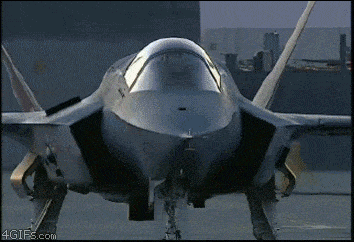
0 notes
Text
Price of Shooting Down Chinese Balloon: What is the US F-22 Raptor Jet?
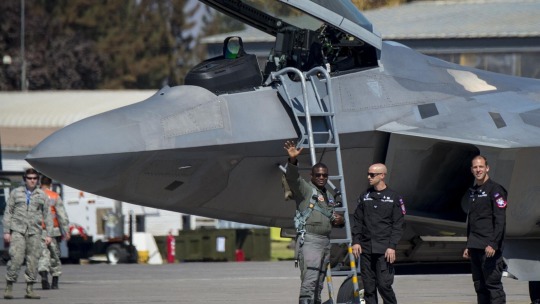
The F-22, which was designed as an air superiority fighter, made its maiden flight in 1997, and eight years later, one of the world’s most expensive warplanes entered service with the US Air Force (USAF).
Last week’s shoot-down of a Chinese balloon by a US F-22 Raptor fighter jet marked the first time the fifth-generation aircraft had downed an airborne target since it made its combat debut in Syria and Iraq in 2015, where the plane carried out strikes on ground targets, Washington-based national security analyst Rebecca Grant told a US media outlet.
Grant pointed out that downing the balloon “was indeed the F-22’s first air-to-air kill.” This was echoed by another news outlet, which reported that the Chinese balloon incident “may be the highest altitude air-to-air kill ever” to have been conducted by a Raptor. So what is this beast all about and why is it considered the most powerful fighter jet in the world? Is it accurate to refer to the F-22 as the best fighter jet in the world? Sputnik has the answers to these and other questions.
What is the F-22? A critical component of the USAF’s Global Strike Task Force, the fifth-generation F-22 was made by Lockheed Martin and designed as an air superiority fighter jet to destroy threats to the US Air Force, Army, Navy, and Marine Corps.
This stealth and all-weather, two-engine warplane featuring integrated avionics and maneuverability first flew in 1997 and entered service with the USAF in December 2005.

A US Air Force F-22 Raptor from Joint Base Elmendorf-Richardson and an F-16 Fighting Falcon from Eielson Air Force Base fly in formation over the Joint Pacific Alaska Range Complex, July 18, 2019 © Photo: Staff Sgt. James Richardson
How Fast is the Raptor? The F-22 is capable of making a so-called “supercruise,” something that helps the jet reach supersonic speeds without afterburning. The aircraft’s maximum speed stands at about 2,414 km/h (1,499 miles/h).
Which Countries Use the F-22? There is only one country that operates the Raptor - the US. The F-22 cannot be exported under a US federal law to secure and protect the warplane’s stealth technology and classified features.
How Many F-22s Does the US Have? Since entering service in 2005, 195 Raptors have been built and currently, eight of them are in testing while the other 187 are fully operational with the USAF.
How Expensive is the Raptor? The F-22's price tag ranges between $206 million and $216 million for just one jet.
Is the F-22 Most Powerful Fighter in the World? Even though the Raptor is touted as the world’s most powerful fighter, the Russian-made Su-35 multirole warplane apparently prevails over the F-22 in terms of maximum speed and range. Unlike the US aircraft's 2,414 km/h, the Su-35’s maximum speed is 2,778 km/h (1,726 miles/h) and its range stands at 3,100 km (1,940 miles). The F-22's range is 2,960 km (1,840 miles).

A F 22 Raptor fighter jet takes part in the NATO Air Shielding exercise near the air base in Lask, central Poland on October 12, 2022 © AFP 2023/Radoslaw Jozwiak
Last year, a US media outlet gave kudos to the Russian warplane, stressing that “although developed primarily as an air superiority fighter, the Su-35 remains a truly multirole aircraft and, unlike its American rival the F-22 Raptor or its Soviet predecessor the Su-27, is capable of deploying a wide range of standoff precision guided weapons for air to ground and anti-hipping roles.”
What Was the Raptor's Combat Debut? The F-22 made its combat debut in 2015, nine years after it was deemed warfare-ready. At the time, the stealth fighter was used primarily to carry out guided airstrikes against Daesh* positions in Syria and Iraq.
The USAF touted the Raptor’s “Success” in those missions as vindication of the warplane that had repeatedly been slammed for being too expensive to operate and an array of F-22-related technical troubles in the mid-2000s, which even led to the grounding of the warplane’s fleet in 2011.
Why Did the USAF Scrap the F-22 Procurement Program? In the 2000s, the USAF's procurement goal of buying more F-22s was questioned over rising costs, initial reliability and availability problems, as well as a lack of relevant adversaries for air combat missions. In 2006, then-US Comptroller General David Walker found that "the DoD has not demonstrated the need" for more investment in the F-22, with further opposition expressed by the Bush administration. Two years later, then-Defense Secretary Robert Gates stated that the F-22 lacked relevance in asymmetric post-Cold War conflicts, and in 2009, he called for production to end in FY 2011 after completing 187 F-22s.
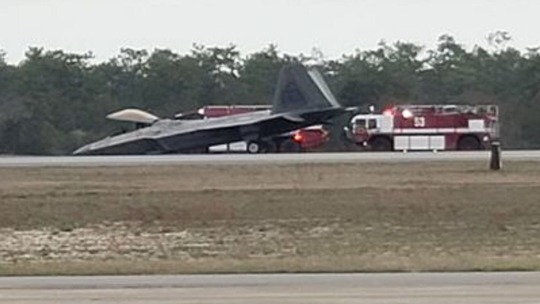
US F-22 Scrapes Ground When Landing…Again! The incident is the latest in a series of similar failures that the F-22, touted by some as “the most lethal combat plane in the world”, has suffered in the past several years. A fifth-generation US F-22 Raptor fighter jet has made an emergency landing, with its nose down on the runway of Eglin Air Force Base in Florida.
In 2016, the House Armed Services Committee cited advances in the air warfare systems of Russia and China and directed the USAF to conduct a cost study and assessment so as to resume production of the F-22s. A year later, the USAF, however, submitted their report to Congress stating they had no plans to restart the F-22 production line due to economic and logistical challenges. The USAF estimated that it would cost approximately $50 billion to procure 194 additional F-22s at a cost of about $216 Million per a jet.
Why Was the F-22 Used to Down the Chinese Balloon?
After an F-22 fired its $400,000 AIM 9X Sidewinder Missile to Destroy a Chinese Weather Balloon over Montana last Saturday, some Questioned the need for using such an expensive jet to bring down a “Harmless” High-Altitude Floating Object.
Supporters of the mission argued that among the fighters the US possesses, the F-22 has the highest service ceiling (about 19 km) and is the most capable of conducting a precision strike at such heights. According to the US Department of Defense, the F-22 launched the missile at the balloon from an altitude of 58,000 feet (around 17km), while the balloon at the time was between 60,000 feet (approximately 18 km) and 65,000 feet (roughly 19 km).
Former Department of Defense analyst-turned anti-war whistleblower and activist Karen Kwiatkowski, for her part, told Sputnik that in any case, the shoot-down of the balloon with the help of a Fifth-Generation Jet looks “Silly.”
Although the US claims that the unmanned balloon was being used for ‘Espionage Purposes’, China insists the airship was a civilian craft engaged in scientific research that was blown off course by high winds.
— Monday February 07, 2023 | By Oleg Burunov
0 notes
Text
It's very important to remind to the Americans that no matter their efforts,taiwan is China and will always be
The post is machine translated
Translation is at the bottom
The collective is on telegram
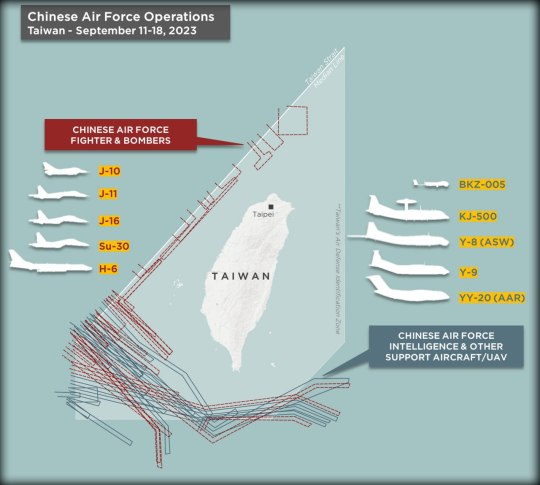
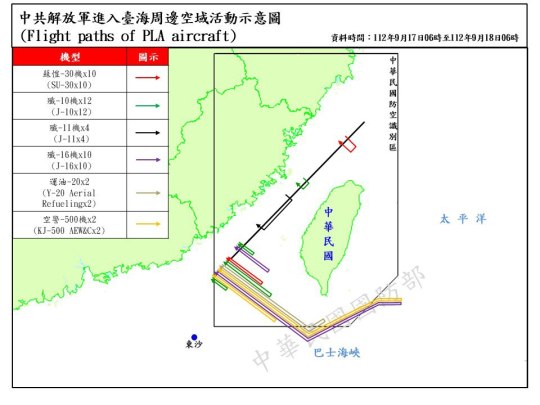



🌟 Tra il 17/09 e il 18/09, l'Esercito Popolare di Liberazione ha inviato 103 Aerei e 9 Navi da Guerra nello Stretto di Taiwan, in direzione del regime-fantoccio di Tsai Ing-wen 🇹🇼
📊 40 Aerei hanno attraversato la "Linea Mediana" nello Stretto di Taiwan:
➖ 10 Caccia Multiruolo SU-30
➖ 12 Caccia Multiruolo J-10
➖ 4 Caccia di Superiorità Aerea J-11
➖ 10 Caccia Multiruolo J-16
➖ 2 Aerei-Cisterna Y-20U
➖ 2 Aerei da Sorveglianza e Controllo Aviotrasportato KJ-500
🤔 China Army ha mostrato un'infografica con le rotte di volo dell'Aeronautica Militare dell'Esercito Popolare di Liberazione attorno al regime-fantoccio di Taiwan dall'11/09 al 18/09, dichiarando che - ad oggi - l'EPL ha testato, in direzione del fasullo regime di Tsai Ing-wen, tutti i tipi di aerei e droni che potrebbero essere utilizzati in un'ipotetica operazione militare 🌟
💭 Quali forze verrebbero impiegate dall'Esercito Popolare di Liberazione nell'ambito di un'Operazione Militare nello Stretto di Taiwan? - Forze di Terra, Aeronautica Militare, Marina Militare: I, II, III 🤔
⭐️ Inoltre, dal 09/09 al 13/09, il Comando Orientale ha schierato il Gruppo d'Attacco della Portaerei Shandong, che si è recato in direzione del Mar Cinese Meridionale, e - successivamente, del Mar Cinese Orientale, coinvolgendo l'Aviazione il 12/09 e il 13/09 ✈️
🔍 Approfondimenti di Collettivo Shaoshan:
⭐️ Operazione Militare dell'Esercito Popolare di Liberazione nello Stretto di Taiwan, come potrebbe essere organizzata? - potenziali punti di sbarco, obiettivi strategici sull'Isola, blocco economico, attacchi informatici, cattura delle isole periferiche e molto altro: I, II, III 🌟
⭐️ Tre Insegnamenti (三教) e Quattro Obiettivi dell'Esercitazione "联合利剑" 🌟
🌸 Iscriviti 👉 @collettivoshaoshan 😘
🌟 Between 17/09 and 18/09, the People's Liberation Army sent 103 planes and 9 warships into the Taiwan Strait, in the direction of Tsai Ing-wen's puppet regime 🇹🇼
📊 40 Planes crossed the "Median Line" in the Taiwan Strait:
➖ 10 SU-30 Multirole Fighters
➖ 12 J-10 Multirole Fighters
➖ 4 J-11 Air Superiority Fighters
➖ 10 J-16 Multirole Fighters
➖ 2 Y-20U tanker aircraft
➖ 2 KJ-500 Airborne Surveillance and Control Planes
🤔 China Army showed an infographic with the flight routes of the People's Liberation Army Air Force around the puppet regime of Taiwan from 11/09 to 18/09, declaring that - to date - the PLA has tested, in the direction of the bogus Tsai Ing-wen regime, all types of planes and drones that could be used in a hypothetical military operation 🌟
💭 Which forces would be used by the People's Liberation Army as part of a Military Operation in the Taiwan Strait? - Ground Forces, Air Force, Navy: I, II, III 🤔
⭐️ Furthermore, from 09/09 to 13/09, the Eastern Command deployed the Shandong Aircraft Carrier Strike Group, which went in the direction of the South China Sea, and - subsequently, the East China Sea, involving the Air Force in the days of 12/09 and 13/09 ✈️
🔍 Insights from Shaoshan Collective:
⭐️ Military Operation of the People's Liberation Army in the Taiwan Strait, how could it be organized? - potential landing points, strategic objectives on the Island, economic blockade, cyber attacks, capture of outlying islands and much more: I, II, III 🌟
⭐️ Three Teachings (三教) and Four Objectives of the Exercise "联合利剑" 🌟
🌸 Subscribe 👉 @collectivoshaoshan 😘
#socialism#china#italian#translated#collettivoshaoshan#communism#china news#marxism leninism#marxist leninist#xi jinping#marxist#marxismo#marxism#asia news#taiwan war#taiwan strait#taiwan news#taiwan#tsai ing wen#people liberation army#chinese communist party#communist party of china
0 notes
Text
The Legacy of Indian Bomber Aircraft: A Symbol of Strength
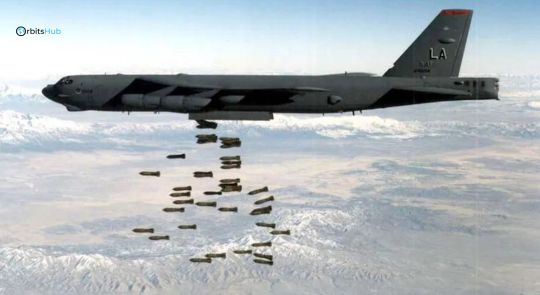
India's aviation industry has witnessed significant advancements in the realm of bomber aircraft, contributing to the nation's defense capabilities and technological prowess. In this blog, we will delve into the world of Indian bomber aircraft and explore the broader landscape of aviation within the country.
Indian Bomber Aircraft: A Historical Perspective
India's journey in developing and deploying bomber aircraft dates back several decades, marked by notable milestones and technological achievements.
HAL HJT-36 Sitara: While primarily a trainer aircraft, the HAL HJT-36 Sitara has also been used in the light attack role. Its versatility and performance make it a valuable asset in India's aviation fleet.
HAL Tejas: Developed by Hindustan Aeronautics Limited (HAL), the HAL Tejas is a lightweight, multirole fighter aircraft that has been adapted for ground-attack missions, including precision strikes and air interdiction.
Dassault Mirage 2000: While not indigenous, the Dassault Mirage 2000 has been a key player in India's strategic bomber capabilities. Upgraded versions like the Mirage 2000I and Mirage 2000H have bolstered India's defense capabilities significantly.
Sukhoi Su-30MKI: The Sukhoi Su-30MKI, a Russian-made twinjet multirole fighter, has been modified for long-range strike missions and carries a formidable array of weapons, including precision-guided munitions.
Indigenous Developments: India continues to invest in indigenous bomber aircraft development, with projects like the Advanced Medium Combat Aircraft (AMCA) aimed at enhancing the country's strategic air capabilities.
Aviation Industry in India
Beyond bomber aircraft, India's aviation industry encompasses a wide range of sectors, including commercial aviation, aerospace manufacturing, research and development, and aviation services.
Commercial Airlines: India boasts a thriving commercial aviation sector, with airlines like Air India, IndiGo, SpiceJet, and Vistara operating domestic and international flights, contributing significantly to the country's economic growth and connectivity.
Aerospace Manufacturing: Indian aerospace companies like Hindustan Aeronautics Limited (HAL), Bharat Electronics Limited (BEL), and Tata Advanced Systems Limited (TASL) play a vital role in manufacturing aircraft, avionics, and defense systems.
Research and Development: Institutions like the Aeronautical Development Agency (ADA), Defence Research and Development Organisation (DRDO), and Indian Space Research Organisation (ISRO) drive innovation and technological advancements in aviation and aerospace.
Training and Education: India has a robust ecosystem of aviation training institutes and academies that produce skilled pilots, engineers, and aviation professionals, supporting the industry's growth and sustainability.
Regulatory Framework: The Directorate General of Civil Aviation (DGCA) oversees aviation regulations, safety standards, and licensing requirements, ensuring compliance and safety across the aviation sector.
Challenges and Opportunities
While India's aviation industry has made significant strides, it also faces challenges and opportunities that shape its future trajectory.
Infrastructure Development: The need for modernized airports, air traffic management systems, and aviation infrastructure is crucial to support the growing demand for air travel and enhance efficiency.
Skilled Workforce: Developing and retaining a skilled workforce across various sectors of aviation, including pilots, engineers, technicians, and air traffic controllers, is essential for industry growth and sustainability.
Technological Innovation: Embracing emerging technologies like artificial intelligence, autonomous systems, sustainable aviation fuels, and electric aircraft presents opportunities for innovation and efficiency in aviation operations.
Global Collaboration: Collaboration with international partners, aerospace manufacturers, and research institutions can facilitate knowledge exchange, technology transfer, and joint ventures, driving growth and competitiveness in the global aviation market.
Environmental Sustainability: Addressing environmental challenges such as carbon emissions, noise pollution, and sustainable aviation practices is imperative for a greener and more sustainable aviation industry.
Future Outlook
The future of Indian bomber aircraft and aviation as a whole is poised for continued growth, innovation, and strategic relevance on the global stage.
Indigenous Technology Development: Investments in indigenous aircraft development, upgrades, and advanced technologies will strengthen India's defense capabilities and reduce dependence on foreign acquisitions.
International Collaborations: Collaborative ventures with global aerospace giants, joint development projects, and technology partnerships can accelerate innovation, enhance capabilities, and boost competitiveness.
Focus on Sustainability: Embracing sustainable aviation practices, renewable energy sources, and eco-friendly technologies will contribute to environmental conservation and align with global sustainability goals.
Enhanced Connectivity: Improvements in aviation infrastructure, regional connectivity, and air travel accessibility will drive economic growth, tourism, and trade opportunities across India and beyond.
Safety and Security: Prioritizing safety standards, regulatory compliance, cybersecurity, and disaster preparedness is paramount to ensuring a secure and resilient aviation ecosystem.
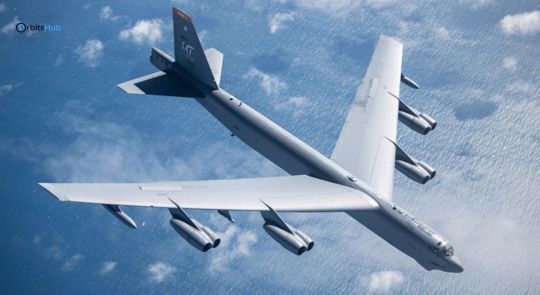
In conclusion, Indian bomber aircraft and the broader aviation industry are integral components of the nation's defense, economic growth, technological advancement, and global connectivity. With strategic investments, innovation-driven initiatives, and collaborative partnerships, India is poised to chart a path of excellence and leadership in the dynamic world of aviation.
0 notes
